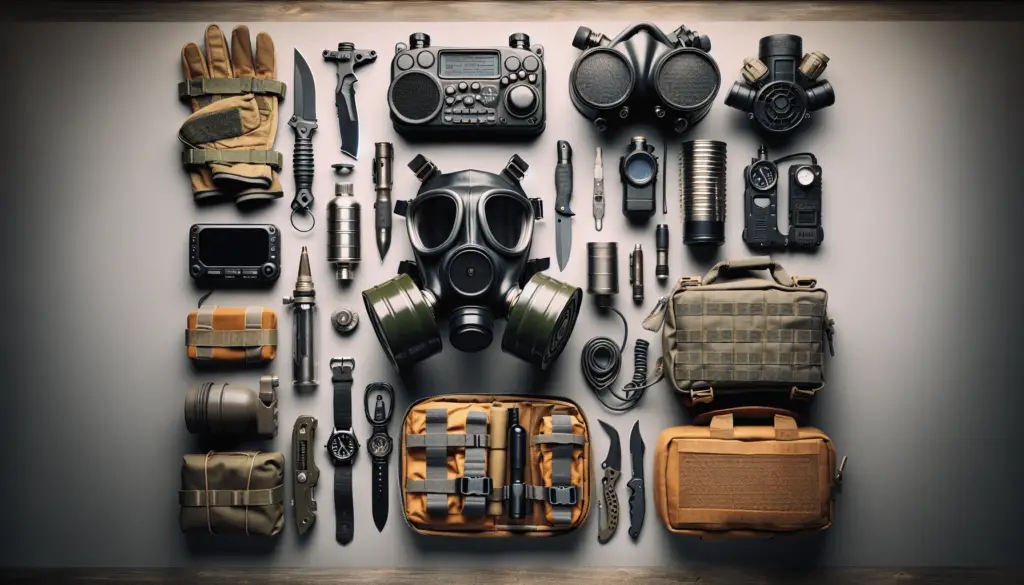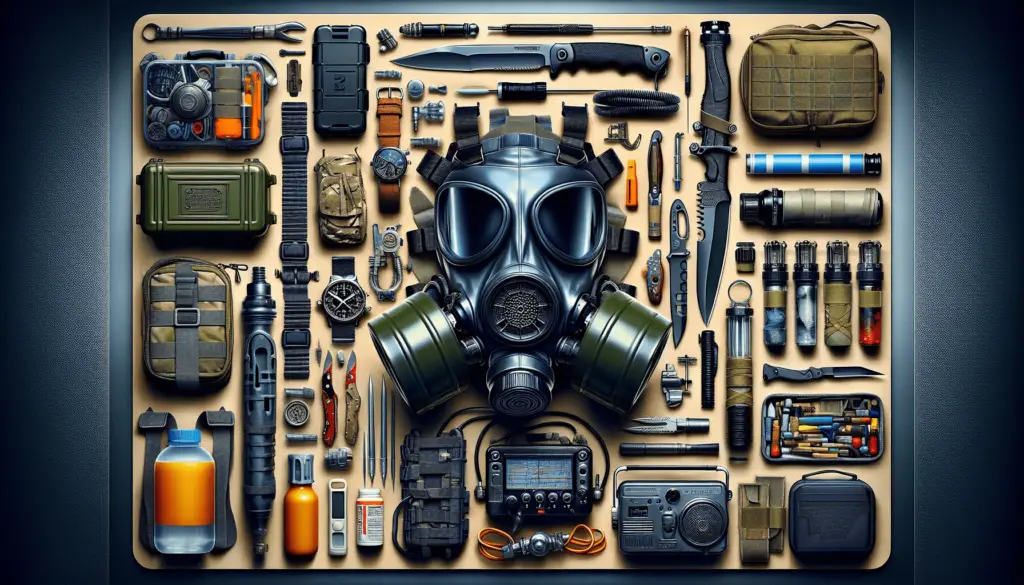Have you ever wondered how you can better prepare for specific threat scenarios? In this detailed article, you will learn how to tailor your prepping approach to different types of threats, ensuring you are ready for any situation that may arise.
Understanding Threat Scenarios
When it comes to prepping, it’s essential to understand the different types of threat scenarios you may face. By knowing what you are preparing for, you can better tailor your approach to ensure you are adequately equipped to handle any situation.
Natural Disasters
Natural disasters such as hurricanes, earthquakes, floods, and wildfires are unpredictable events that can cause widespread devastation. Preparing for natural disasters involves having an emergency kit, a family emergency plan, and knowledge of evacuation routes.
Pandemics
Pandemics, such as the recent COVID-19 outbreak, can spread rapidly and have far-reaching consequences. Preparing for a pandemic involves having a supply of essential items such as food, water, and medical supplies, as well as following guidelines from health authorities.
Civil Unrest
Civil unrest, such as protests, riots, or civil disobedience, can disrupt daily life and pose a threat to personal safety. Preparing for civil unrest involves staying informed about local events, having a communications plan, and knowing when to stay put or evacuate.
Tailoring Your Approach
Once you have identified the specific threat scenarios you may face, it’s essential to tailor your prepping approach to address each one adequately. Here are some tips for customizing your preparedness plan for different types of threats.
Natural Disasters
- Create a customized emergency kit tailored to the specific natural disasters common in your area. For example, if you live in a hurricane-prone region, include items such as plywood, hurricane shutters, and a generator in your emergency kit.
- Familiarize yourself with local evacuation routes and shelters, and have a family emergency plan in place that includes meeting points and communication methods.
- Stay informed about potential threats by signing up for alerts from local authorities and monitoring weather reports regularly.
Pandemics
- Stock up on essential items such as non-perishable food, water, medical supplies, and personal protective equipment (PPE) such as masks and gloves.
- Follow guidelines from health authorities on how to prevent the spread of disease, such as practicing good hygiene, social distancing, and wearing a mask in public.
- Stay informed about the latest developments in the pandemic by following reliable sources of information such as the Centers for Disease Control and Prevention (CDC) and the World Health Organization (WHO).
Civil Unrest
- Stay informed about local events by monitoring news sources, social media, and community forums.
- Have a communications plan in place that includes designated emergency contacts, meeting points, and a way to stay in touch with family members in case of separation.
- Know when to stay put and when to evacuate based on the level of threat posed by civil unrest in your area.

Building a Prepping Kit
Building a prepping kit is an essential step in preparing for specific threat scenarios. Your kit should include essential items that will help you survive and thrive in an emergency situation.
Food and Water
- Stock up on non-perishable food items such as canned goods, dried fruits, nuts, and high-energy snacks that don’t require cooking.
- Have a supply of clean drinking water stored in containers that are easy to carry and can be easily accessed in an emergency.
- Consider investing in a water filtration system or water purification tablets to ensure a clean water supply in case of contamination.
Shelter and Clothing
- Include items such as tents, tarps, sleeping bags, blankets, and warm clothing in your prepping kit to provide shelter and protection from the elements.
- Pack extra clothing, socks, and sturdy shoes to protect yourself from the cold, wet weather, and potential injuries.
- Consider including items such as hand warmers, rain gear, and insect repellent to stay comfortable and safe in any weather conditions.
First Aid and Medical Supplies
- Stock up on a comprehensive first aid kit that includes bandages, antiseptic wipes, pain relievers, and prescription medications for chronic conditions.
- Include medical supplies such as a thermometer, gloves, masks, and sanitizing wipes to prevent the spread of disease and protect yourself from infections.
- Consider taking a first aid training course to learn how to administer emergency medical care in a crisis situation.
Tools and Equipment
- Pack essential tools such as a multi-tool, flashlight, batteries, matches, and a portable stove or campfire kit for cooking and lighting in an emergency.
- Include items such as a whistle, signaling mirror, compass, and map to navigate and communicate in case of separation or loss of communication.
- Consider investing in a solar charger or portable power bank to keep your electronic devices charged and operational in an emergency.
Establishing Communication Channels
Communication is key in any emergency situation, and having established communication channels can help you stay connected with family members, friends, and authorities in times of crisis.
Emergency Contacts
- Create a list of emergency contacts that includes family members, friends, neighbors, and local authorities you can reach out to for help in an emergency.
- Share your emergency contact list with family members and friends, and ensure everyone knows who to call or where to go in case of separation.
- Consider setting up a group chat or communication app on your phone to stay in touch with your contacts and share important updates in real-time.
Two-Way Radios
- Invest in a pair of two-way radios or walkie-talkies that can be used to communicate with family members and neighbors within a short distance.
- Test your two-way radios regularly to ensure they are in working condition and have a set of spare batteries or chargers on hand.
- Establish a communication plan with your family members on how to use the two-way radios and set up designated channels for different scenarios.
Ham Radio License
- Consider obtaining a ham radio license and investing in amateur radio equipment to communicate with emergency services and other preppers in case of a widespread disaster.
- Join local ham radio clubs or communities to practice your skills, learn from experienced operators, and participate in emergency drills and exercises.
- Stay informed about local repeaters, frequencies, and emergency nets that can help you coordinate with other radio operators during an emergency.

Securing Your Home and Property
Securing your home and property is crucial in protecting yourself and your loved ones during a crisis. By taking proactive measures to fortify your home, you can reduce the risk of theft, vandalism, or intrusion.
Reinforcing Doors and Windows
- Install sturdy locks, deadbolts, and security bars on all doors and windows to prevent forced entry and unauthorized access to your home.
- Consider reinforcing your doors with metal frames, shatterproof glass, or security film to make them more resistant to break-ins and burglaries.
- Trim bushes, trees, and shrubs near windows and doors to eliminate hiding spots for intruders and improve visibility around your property.
Establishing Perimeter Security
- Install motion-activated lights, security cameras, and alarm systems to deter criminals and alert you to any suspicious activity around your home.
- Consider installing fencing, gates, or barriers to control access to your property and create a secure perimeter around your home.
- Mark your property lines with clear signs, markers, or barriers to establish boundaries and prevent trespassing or encroachment by outsiders.
Safeguarding Valuables
- Secure valuable items such as jewelry, cash, documents, and important belongings in a fireproof safe or lockbox that is bolted to the floor or wall.
- Consider storing backup copies of important documents, photos, and data in a secure offsite location or digital storage device.
- Take inventory of your possessions, document serial numbers, and take photos to help identify and recover stolen items in case of theft or loss.
Developing Survival Skills
In addition to having the right gear and supplies, developing survival skills can help you adapt and thrive in challenging situations. By honing your skills in areas such as first aid, navigation, and self-defense, you can increase your chances of survival in an emergency.
First Aid and Medical Training
- Take a first aid and CPR course to learn how to administer basic medical care, treat injuries, and respond to emergencies effectively.
- Practice your first aid skills regularly by participating in drills, scenarios, and simulations to build confidence and muscle memory.
- Stay informed about the latest advancements in emergency medicine, wound care, and trauma treatment to stay up-to-date on best practices.
Navigation and Orienteering
- Learn how to read a map, use a compass, and navigate using natural landmarks to find your way in unfamiliar terrain or during a disaster.
- Practice orienteering skills by going on nature hikes, geocaching adventures, or outdoor expeditions to test your navigation abilities in real-world scenarios.
- Consider taking courses in wilderness navigation, GPS technology, or search and rescue techniques to enhance your navigation skills further.
Self-Defense and Security
- Take self-defense classes to learn how to protect yourself, de-escalate dangerous situations, and defend against physical threats or attacks.
- Practice situational awareness by staying vigilant, avoiding dangerous areas, and recognizing potential threats before they escalate into crises.
- Consider investing in personal protection devices such as pepper spray, tasers, or firearms for self-defense and security in high-risk situations.
Conclusion
In conclusion, tailoring your prepping approach to specific threat scenarios is essential in preparing for emergencies effectively. By understanding the different types of threats you may face, customizing your preparedness plan, building a prepping kit, establishing communication channels, securing your home and property, and developing survival skills, you can increase your readiness and resilience in any situation. Stay informed, stay prepared, and stay safe.
